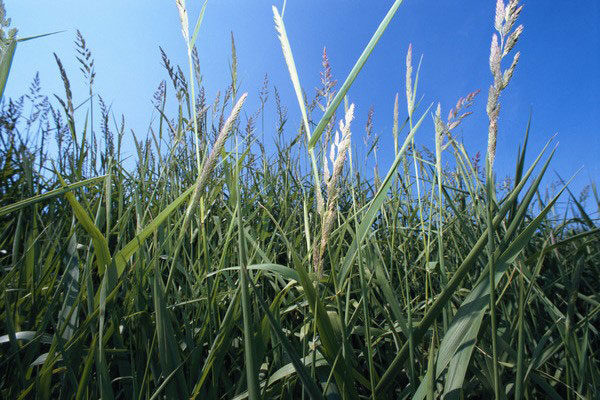Agricultural Value Chains, Contract Farming, and Rural Development

By Molly Ingram, PhD ’22 (Economics)
Transformation of agricultural production
As low- and middle-income countries urbanize, demand for food, especially processed food, grows rapidly. To meet such demand, agricultural production transitions from subsistence farming and trade in raw or minimally processed goods, with little off-farm value-added, to more complex value chains where firms purchase inputs from farmers (or upstream firms), add value to products via processing, and then sell products to downstream firms or consumers. This transformation creates new economic opportunities from domestic, international, and multinational organizations. The “supermarket revolution” that occurred in parts of Africa, Latin America, and Asia over the past two decades underscores this evolution.
Challenges for transformation and a role for policy
A necessary component of this transition is farmer market participation. However, agricultural markets are riddled with imperfections, especially for low-income countries, which impact both farmers and the would-be buyers of their products. Farmers often lack access to credit, insurance, high-quality inputs, and other relevant services. Firms commonly face uncertainty regarding prices, output volumes, output quality, and default risk. Contract farming arrangements can help overcome some of these challenges.
Contract farming is an agreement made at the beginning of the agricultural season between a farmer, or farmer group, and an aggregator, in which the aggregator promises to purchase crops from the farmer post-harvest and the farmer promises to sell to the aggregator. An aggregator could be a firm, exporter, processor, nonprofit organization, co-op, or other entity. Although the most basic form of contract farming is a simple procurement or marketing contract, there are often additional terms, and the specifics of contract farming arrangements vary widely. Often, contracts will offer farmers some combination of access to credit, capital inputs, technical assistance, and/or price premiums.
Such potential benefits to contract farming have attracted the attention of international development organizations, governments, and other actors with an interest in agricultural and rural development. Contract farming’s ability to improve outcomes for all actors along the value chain, farmers, and firms— and thus promote further economic growth—may help reduce rural poverty and spur further economic activity.
One way organizations have considered supporting contract farming opportunities for smallholder farmers is via subsidies that induce firms to expand existing operations to new areas and farmers. This type of policy supports small farmers by creating more economic opportunities and helps firms overcome the one-off fixed cost of establishing a contracting operation in a new area. These one-time costs, combined with informational asymmetries between firms and farmers regarding productivity, output quality, trustworthiness, and more, cause firms to maintain smaller contracting operations than would be profitable if firms had complete information about farmers. In this scenario, subsidizing expansion generates welfare increases for all parties.
Who benefits?
If rural development and poverty reduction is a policy goal of encouraging contract farming is, it is important to understand who benefits and how they benefit from contract farming arrangements. Farmers that choose to participate in contract farming must expect to benefit from participation, and many empirical studies of different schemes generally find that participation benefits households. Benefits could be derived in a variety of ways: increased household income, less volatile income, partial insurance against price risk, improved food security, and more. The benefits participation generates depend on the details of the contracting arrangement.
While participation is commonly found to improve households’ wellbeing, not all smallholder farming households have the option to participate in contract farming, even if there is a contract farming scheme operating within their region. Firms select which farms to contract with based on different criteria that are important to managing the cost and risk of contracting. Common criteria include proximity to the firm or accessibility via vehicle, access to irrigation, membership in a farming association or co-op, and size of the farm. Often the households that participate in contract farming have more people, hold more land, produce more output, and participate more in existing agricultural markets than non-contracted households. From a rural development standpoint, this can cause concern that contract farming only benefits households that are already better off and not the households that policy makers would like to target, especially if the objective is poverty reduction.
This raises the question of whether the presence of a contract farming scheme can generate benefits for households that are not contracted by the firm. Obtaining empirical evidence of spillovers is challenging, because data is often only collected from contracted and non-contracted households within the region where the contracting firm works. In these cases, impacts of contracting are estimated by comparing outcomes for the contracted and non-contracted households while controlling for any bias from the non-random selection of contracted households to the extent the data allow. Existing research suggests one way in which non-contracted households may benefit from a contract farming scheme operating in their region is through labor markets. When contracted households increase production or use labor-intensive production methods to meet the requirements of the contract, their labor demand increases. If surplus labor is available, it is most often from members of non-contracted households, and these wages augment the incomes of non-contracted households. My recent research on a contract farming scheme in Mozambique indicates another channel through which non-contracted households can benefit from the presence of a contracting firm operating in their region: spot market purchases.
A case study from Mozambique
From 2017 to 2019, a pilot program on contract farming expansion was carried out in Mozambique. Through this program, a firm in central Mozambique that contracted with farmers to purchase maize expanded their contracting region and increased the number of contracted households by nearly 50 percent. Household surveys were conducted with contracted and non-contracted households in the newly entered region and with households that lived beyond the new contracting boundary. These surveys allow researchers to estimate the benefits of the scheme for participating households and the benefits that accrue to non-contracted households from residing within the contracting region.
The firm offered group contracts with up to 25 households per village. The contracts are procurement contracts in which the firm agrees to come to the village post-harvest and buy the output from the farmers at a price comparable to the market price as opposed to the farm-gate price. Although the price is not fixed in advance, by offering a price within some margin of the market price, the firm essentially insures the contracted households against a bad price offer from another buyer. Additionally, the contracted households do not pay any transport costs that they previously would have incurred if they did not want to sell at farm-gate.
Once the firm’s truck is in the village to pick up the harvest from the contracted households, the transportation costs are sunk; so if space remains in the truck, the firm is willing to buy from non-contracted households to minimize its per-unit costs. To avoid negotiation costs with each farmer and maintain a favorable relationship with the village, the firm pays the same price to everyone. Non-contracted households have an opportunity to sell to the firm and now also avoid having to accept a low price. The firm’s participation in the spot market also adds competitive pressure to traders and other buyers, which can impact the prices offered. In the two years after the expansion of the contracting region, maize prices within the region were 11 percent higher than average for both contracted and non-contracted households. Income from maize sales was 20 percent higher for contracted households and 15 percent higher for non-contracted households than maize income prior to the contracting expansion.
Acknowledgements
Thanks to the World Bank and the Mozambique Agricultural Aggregator Pilot for allowing me access to the data, and thanks for research-related financial support from the World Bank and the Einaudi- Social Science Research Council (SSRC) Dissertation Proposal Development Program. This research was presented at the 2022 Agricultural & Applied Economics Association (AAEA) Annual Meeting thanks to travel-related financial support from the Emerging Markets Institute.
About Molly Ingram, PhD ’25 (Economics)

Molly Ingram is a fourth-year PhD student in the Department of Economics at Cornell University. Her research lies at the intersection of development, industrial organization, and macroeconomics, and her work evaluates the role agricultural markets or, more broadly, agricultural value chains play in economic growth and development. Prior to joining Cornell, Ingram received an MSc in economics from the University of Wisconsin and worked as a senior research associate at Innovations for Poverty Action on WASH Benefits in Kenya.
